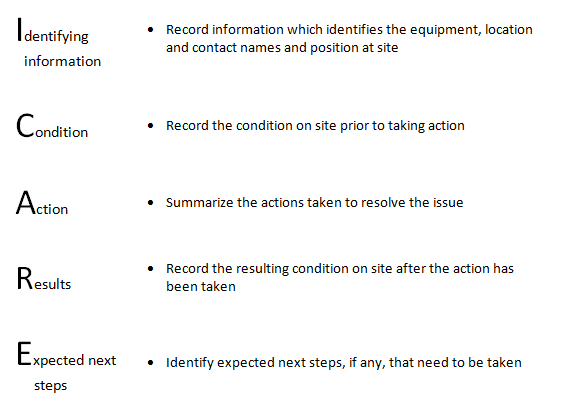I-CARE – 5 Steps to Work Orders that Shout “Value”

During our workshops, we discuss the importance of the quality of the written word and how it helps the customer recognize the value that we provide in the work performed. This easy acronym – I-CARE –highlights the 5 steps to create work orders that shout “value”.
When I have the opportunity to speak with service managers, one of the discussion points that inevitably comes up is about the quality of the work order summaries written by their service technicians. It seems that in many organizations, the quality of the written summaries of work is all over the map – from very poor to excellent. When I ask if they have clear and simple guidelines to help their busy technicians to consistently write well, they often admit that those guidelines are still on the “to do” list.
The quality of the written work order summary is important for a number of reasons. One reason is that the customer relies on the summary to give them a sense of the quality of the work that was performed. Because of the nature of our work, it is unlikely that our customers will be able to objectively assess the quality themselves. A clear, concise and comprehensive summary will communicate more value than a simple “fixed unit” on the report. Another reason for complete and concise reports is that the report may become an important document if there is ever a dispute about what work was actually performed. Yet another reason is that a complete and concise report will save time in the long run. Think of your own organization. How many times has the technician had to be interrupted in the field to answer a question about the work performed that could have been prevented if the work order summary description was more complete?
To help you address this problem, I suggest that you introduce the I-CARE approach with your team. It is a simple, easy to remember acronym that will help your technicians write work order summaries that will communicate the value of their work.

Add your own example to provide context. You may also wish to remind your technicians to:
- Remember that everything they write on the work order goes to the customer so spelling and grammar are important
- Include all materials and relevant consumables
- Omit obvious facts (e.g. “drove to the work site”)
- Refrain from language that may create doubt in the customers mind (e.g. “seems to be working”)
Perhaps the most important question of all is to ask your team to imagine that they are the customer who will receive the invoice that will follow. Based on the quality of the work order summary, how comfortable do they feel about paying the bill?
I hope you find this helpful. If you want to see other suggestions to improve the customer experience for your customers, send me a quick note and I will be happy to send you a copy of our Pocketbook of Proactive Service®, which includes I-CARE and several other ideas for improving the service experience for your customers.
As always I welcome your questions and your feedback. You can connect with me via telephone or email or leave a comment right here on the site. And as always, please feel free to leave a link back to your own blog if you have one via the commentluv feature here on the site. If you are reading this blog post via email, you will need to locate this post on my website by clicking here. Scroll down to the bottom of the page where you will find the comment section.
Jim Baston
“The difference between the right word and the almost
right word is the difference between lightning and a lightning bug.”
– Mark Twain





Leave a Reply
Want to join the discussion?Feel free to contribute!